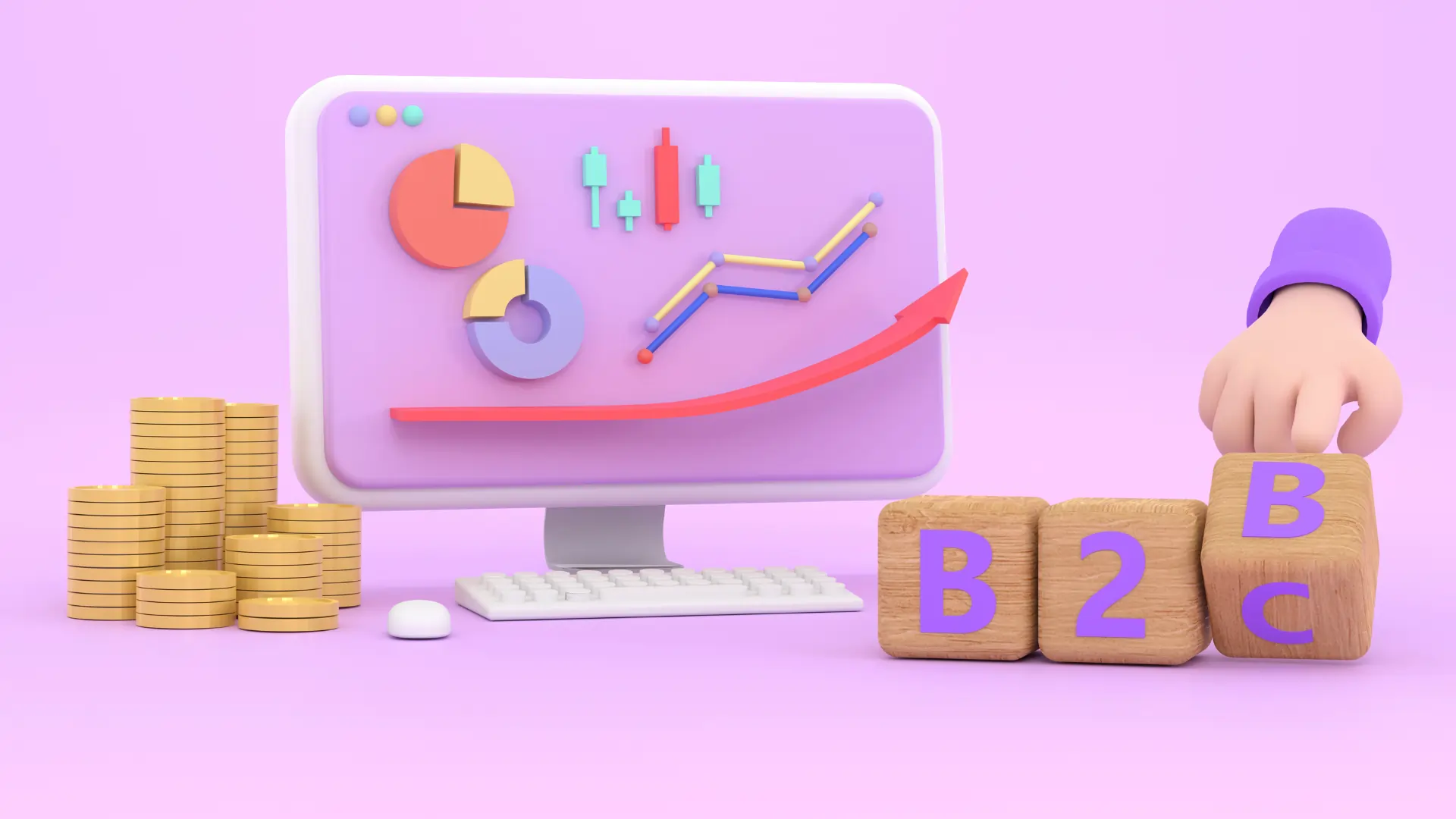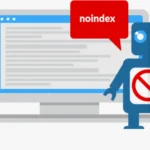Benefits Of B2C SEO

Benefits of B2C SEO
Introduction:
B2C SEO (Business-to-Consumer Search Engine Optimization) is a digital marketing strategy aimed at optimizing online content and websites to attract and engage individual consumers. In essence, B2C SEO focuses on enhancing a business’s online presence to reach and appeal to the end-users who make individual purchasing decisions.
In the ever-expanding digital landscape, the importance of Search Engine Optimization (SEO) cannot be overstated. While many discussions focus on B2B SEO, let’s delve into the often overlooked but equally crucial realm — the Benefits of B2C SEO.

1.Enhancing Online Visibility
A. Increasing Organic Traffic:
• B2C SEO strategies are tailored to resonate with individual consumers, ensuring your products or services are visible to a broader audience.
• By optimizing for relevant keywords, businesses can secure prime positions in search results, attracting more organic traffic.
Example:
Consider a B2C e-commerce website specializing in sustainable fashion. The SEO strategy involves creating content that resonates with environmentally conscious individual consumers. By optimizing for keywords like “sustainable fashion,” “eco-friendly clothing,” and “ethical apparel,” the website aims to secure prime positions in search results. As a result, when consumers search for environmentally friendly clothing options, the website appears prominently, attracting a broader audience interested in sustainable products.
B. Local SEO for Physical Stores:
• For businesses with physical locations, B2C SEO can enhance local visibility.
• Local SEO tactics like Google My Business optimization and local keyword targeting can drive foot traffic to brick-and-mortar stores.
Example:
Imagine a local bakery with physical storefronts in a city. The B2C SEO strategy focuses on enhancing local visibility to drive foot traffic to the brick-and-mortar stores. Through Google My Business optimization, the bakery ensures accurate business information, such as location, hours, and customer reviews, is readily available in local search results. Additionally, local keyword targeting involves optimizing content with phrases like “best bakery in [city]” or “fresh pastries near me.” These tactics increase the bakery’s visibility among local consumers searching for nearby sweet treats, ultimately driving more customers to their physical locations.

2. Building Brand Authority
A. Content Marketing for Consumer Engagement:
• B2C SEO involves creating consumer-centric content that not only attracts but engages.
• Blogs, videos, and interactive content contribute to brand authority, establishing trust and loyalty among consumers.
Example:
Consider a B2C company in the fitness industry. The SEO strategy focuses on creating consumer-centric content that promotes health and wellness. The company regularly publishes blog posts featuring workout routines, nutrition tips, and success stories. Additionally, they produce engaging videos showcasing workout demonstrations and client testimonials. This content not only attracts individuals interested in fitness but actively engages them in their health journey. Consumers find value in the content, building a sense of community around the brand and establishing trust in its expertise and commitment to their well-being.
B. Social Media Integration:
• SEO strategies in the B2C realm extend to social media platforms.
• Integrating social media with SEO efforts amplifies brand visibility, fosters community engagement, and creates a holistic online presence.
Example:
Imagine a B2C fashion brand that integrates social media seamlessly with its SEO efforts. The brand shares visually appealing content on platforms like Instagram, featuring new clothing collections, styling tips, and behind-the-scenes glimpses. Each social media post is optimized with relevant hashtags and links back to the brand’s website. Engagement on social media, including likes, shares, and comments, contributes to increased brand visibility. By fostering community engagement through conversations and user-generated content, the brand not only strengthens its social media presence but also enhances its overall SEO by creating a cohesive and holistic online brand image.
You May Also Like Reading: What are the 4Ps of SEO?

3. Boosting Sales and Conversions
A. Optimizing Product Pages:
• B2C SEO focuses on optimizing product pages for higher conversions.
• Clear product descriptions, compelling visuals, and streamlined user experiences are emphasized to encourage swift conversions.
Example:
Consider an online electronics retailer as a B2C business. In their SEO strategy, the focus is on optimizing product pages for higher conversions. For a specific product, such as a new smartphone, the product page includes a clear and concise product description highlighting key features, specifications, and benefits. Compelling visuals, including high-resolution images and interactive 360-degree views, provide a detailed look at the product. The page is designed with a user-friendly layout, emphasizing a prominent call-to-action button for easy purchase. By optimizing product pages in this manner, the retailer enhances the likelihood of visitors converting into customers.
B. Mobile Optimization for On-the-Go Shoppers:
• With the rise of mobile shopping, B2C SEO strategies prioritize mobile optimization.
• Ensuring a seamless experience on mobile devices caters to the on-the-go nature of modern consumers, driving higher conversion rates.
Example:
Imagine an online fashion retailer implementing B2C SEO strategies with a mobile-first approach. Recognizing the prevalence of mobile shopping, they ensure that their website is fully responsive and optimized for various mobile devices. The product pages are designed to provide a seamless experience, with easy navigation, clear product images, and a simplified checkout process. Additionally, the retailer may leverage mobile-specific features, such as swipeable image galleries and one-touch purchasing. This prioritization of mobile optimization caters to the on-the-go nature of modern consumers, resulting in a user-friendly mobile shopping experience that drives higher conversion rates.

4. Understanding Consumer Behaviour
A. Data-Driven Decision-Making:
• B2C SEO relies on data analytics to understand consumer behaviour.
• Tracking user interactions, click-through rates, and conversion paths enables businesses to make informed decisions for continuous improvement.
Example:
Consider an online subscription service for a B2C business, such as a streaming platform. In their B2C SEO strategy, the platform relies on data analytics to understand consumer behavior. By tracking user interactions, they analyze which content genres are most popular, when users are most active, and the features that lead to higher engagement. This data-driven approach enables the platform to make informed decisions, such as promoting trending content, optimizing the user interface based on click-through rates, and personalizing recommendations. Through continuous analysis of user behavior, the platform adapts its SEO strategy to align with evolving consumer preferences, ultimately enhancing user satisfaction and retention.
B. Adapting to Seasonal Trends:
• B2C SEO strategies dynamically adapt to seasonal trends and consumer preferences.
• Understanding and capitalizing on seasonal shifts in demand contribute to sustained relevance and market responsiveness.
Example:
Imagine a B2C online retail store specializing in outdoor equipment. Their B2C SEO strategy dynamically adapts to seasonal trends and consumer preferences. As winter approaches, the SEO focuses on promoting winter-related products such as snow gear, jackets, and thermal wear. During the summer, the strategy transitions to emphasize outdoor activities, swimwear, and camping equipment. By understanding and capitalizing on seasonal shifts in demand, the online retailer ensures that its SEO efforts remain relevant and aligned with consumer needs throughout the year. This adaptability contributes to sustained visibility and responsiveness to market dynamics.

5. Driving Cost-Effective Marketing
A. Long-Term Return on Investment (ROI):
• B2C SEO provides a sustainable and cost-effective marketing approach.
• While paid advertising yields immediate results, a well-optimized site can maintain visibility over the long term, providing a higher return on investment.
Example:
Consider an online beauty and skincare B2C brand investing in SEO. While the brand might utilize paid advertising for specific product launches or promotions, the long-term focus is on B2C SEO. They consistently create high-quality content around skincare tips, beauty trends, and product reviews, optimizing their site for relevant keywords. Over time, as this content ranks organically, the brand gains sustained visibility in search results. Despite the initial investment in creating and optimizing content, the long-term ROI becomes evident as the brand continues to attract organic traffic, build brand authority, and drive ongoing sales without the recurring costs associated with paid advertising.
B. Reducing Dependency on Paid Ads:
• By ranking organically, B2C SEO reduces the reliance on paid advertising.
• A diversified marketing approach, combining organic and paid strategies, offers a more robust and cost-efficient marketing ecosystem.
Example:
Imagine an e-commerce B2C fashion retailer initially heavily reliant on paid advertising for customer acquisition. With a strategic shift toward B2C SEO, the retailer invests in optimizing product pages, creating engaging blog content, and building high-quality backlinks. As the organic rankings improve, the brand starts to see a significant increase in free, organic traffic. This reduces the dependency on expensive paid advertising for every customer acquired. By combining organic and paid strategies in a diversified approach, the retailer establishes a more robust and cost-efficient marketing ecosystem, allocating resources strategically for long-term sustainability and a higher overall return on investment.

6. Ensuring Competitive Edge
A. Staying Ahead in the Digital Landscape:
• B2C SEO is a dynamic field that requires staying abreast of evolving search engine algorithms and consumer trends.
• Regular optimization efforts ensure businesses remain competitive and relevant in the rapidly changing digital landscape.
Example:
Consider a B2C online electronics retailer navigating the dynamic landscape of SEO. The retailer recognizes the growing trend of voice search and the importance of mobile-first indexing in search engine algorithms. To stay ahead, they adapt their B2C SEO strategy by optimizing product pages for voice search queries and ensuring their website is fully responsive for mobile users. Additionally, they monitor emerging consumer trends, such as an increased demand for sustainable electronics, and incorporate eco-friendly product descriptions into their content.
Regular optimization efforts involve updating product listings, refining keyword strategies based on real-time search data, and implementing schema markup for enhanced rich snippets. By staying abreast of evolving search engine algorithms and consumer preferences, this retailer maintains a competitive edge, ensuring their products remain prominently visible in search results, ultimately contributing to sustained growth and relevance in the ever-changing digital landscape.

7. Social Media Integration
A. Social Signals:
• Integrate SEO efforts with social media strategies to amplify the online presence.
• Engage with consumers on social platforms, fostering brand loyalty and trust.
Example:
Imagine a B2C lifestyle brand that integrates its SEO efforts with social media strategies. The brand consistently shares blog content on its website covering topics related to sustainable living. To amplify its online presence, the brand actively promotes this content on social media platforms, such as Twitter and Facebook. Each blog post shared on social media includes engaging captions, relevant hashtags, and a call-to-action to encourage users to visit the website. By integrating SEO with social media efforts, the brand not only increases visibility on search engines but also fosters brand loyalty and trust by engaging with its audience on multiple online channels.
B. Visual Content for Social Sharing:
• Create visually appealing content that encourages social sharing.
• Utilize platforms like Instagram, Pinterest, and Facebook to showcase products visually.
Example:
Consider a B2C travel agency aiming to leverage visual content for social sharing. The agency creates visually appealing content, such as stunning destination images, travel tips infographics, and travel experience videos. These visuals are shared across platforms like Instagram and Pinterest, showcasing the beauty of various travel destinations. By encouraging social sharing, the agency utilizes user-generated content from happy customers sharing their travel experiences on Facebook. This not only enhances the brand’s visual appeal but also creates a community around travel enthusiasts. The integration of visually appealing content with social sharing platforms contributes to increased brand visibility and a broader online presence.
Conclusion
In conclusion, the Benefits of B2C SEO extend far beyond mere online visibility. From building brand authority and understanding consumer behaviour to driving cost-effective marketing, a well-crafted B2C SEO strategy is the linchpin for success in the consumer-driven marketplace. As businesses navigate the digital realm, embracing the profound advantages of B2C SEO is not just a choice but a strategic imperative for sustainable growth and market dominance.
Partnered with Naumaan Oman
Recent Posts
Working Together Ideas come to life
No matter how big your company is, as you expand and reach new highs you’ll want an agency to have your back. One with a process
360presence@gmail.com

© 2023 360PRESENCE All rights Reserved
















